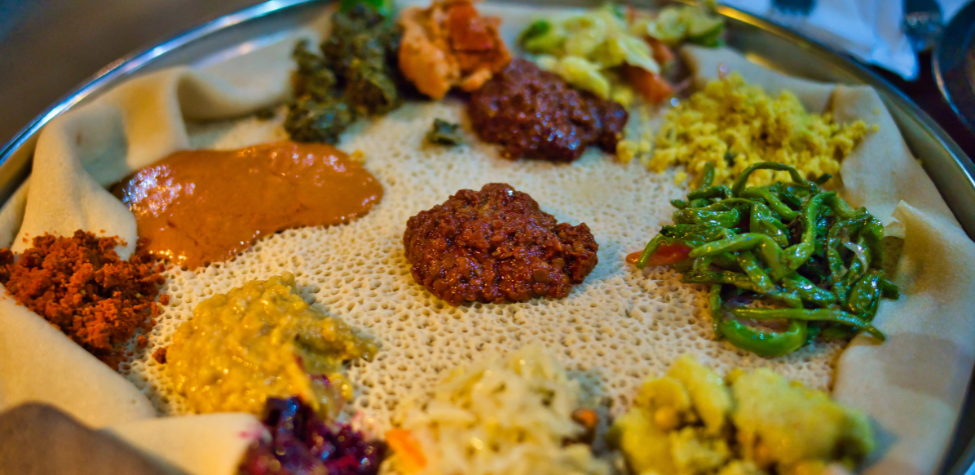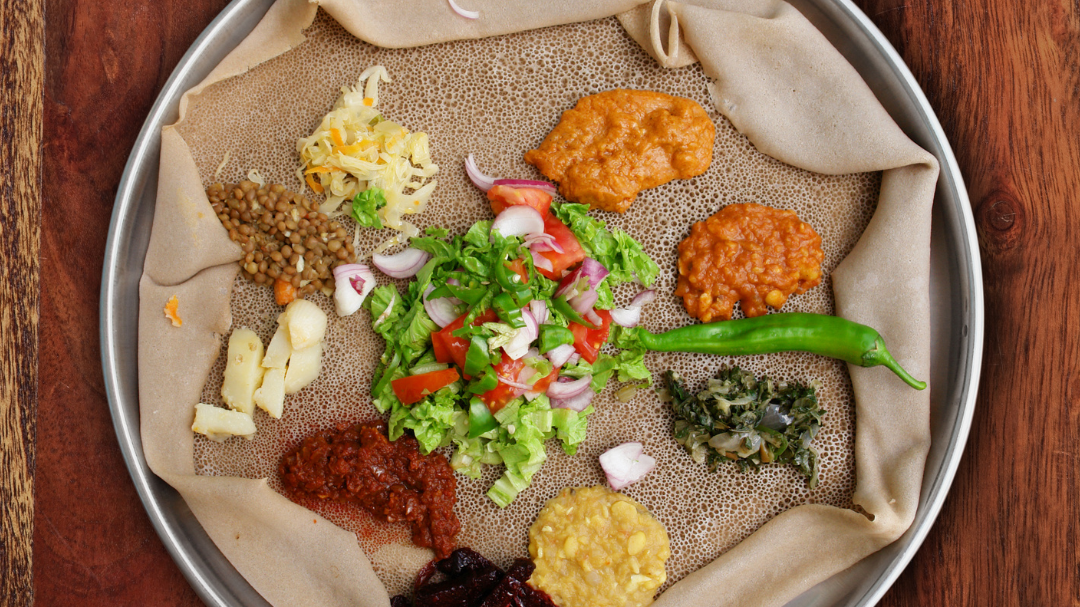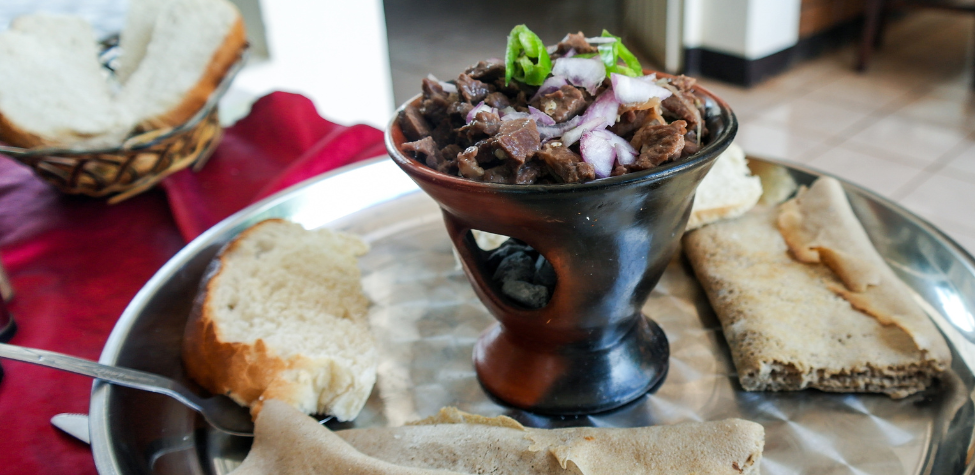Your table will love this plant-based take on this Ethiopian/Eritrean staple! Injera is the perfect communal food for creating an interactive, shared meal experience with friends, family or at special occasions.

Injera
Injera
Rated 5.0 stars by 1 users
Cuisine
Ethiopian
Author:
Asha Weldon
Servings
5-7 Injera (16 inches)
Your table will love this plant-based take on this Ethiopian/Eritrean staple! Injera is the perfect communal food for creating an interactive, shared meal experience with friends, family or at special occasions.
Recipe adapted from Maskal Teff

Ingredients
-
7 cups (188g) Maskal Teff Flour
-
2 cups (473g) starter
-
8 cups (1.89kg) lukewarm water
-
2 cups (473g) water
-
2-4 cups (473g-946g) of room temperature water
-
Non-GMO Project Verified
-
Prepared injera batter
-
Sauteed greens and lentils (if desired)
Directions
Creating the Starter:
Day 1
Mix 1 cup of Teff flour and 2 cups of water (room temp) in a container. Whisk until clump-free and thoroughly mixed. Thin foam should develop at the top.
Store in a dark, dry (70* F) room. Room warmth will ferment your starter faster. Observe for 3 days but do not disturb the contents or touch the container.
After 3 Days
Open the container where there will be foam film and murky water atop the settled flour. Toss the murky water, then stir the starter until completely combined.
If using later, add ¾ cup water and store in the fridge.
Creating the Dough
Mix the starter with the flour in a resealable container, preferably a clear one. You can also use a large bowl and then move the ingredients to a sealable container.
Pour 3-4 cups gradually, 1 cup at a time, while mixing. 3 is likely all needed for thick consistency.
Knead for 3-5 minutes until thick, smooth and peelable from the bowl. Transfer and press into the bottom of the container.
Clean the container’s sides with 3-4 cups of water, but don’t let it mix with the dough. It should just layer as top water to keep mold from growing. Add a tight lid and store in a dry, room temperature room for 1-3 days based on preference (1 day = less sour, 3 days = acidic)
Top water can be discarded daily to reduce sourness.
Gelatinization
1-3 days later, discard top water. Mix dough thoroughly.
Boil 2 cups of water, turn the heat to medium-low, then add 1 cup of batter to water while whisking.
Turn the heat to medium-high to bring the mix to a boil. Once it’s bubbling, add the mixture to your batter, then add 1-2 cups of water to dilute to desired consistency. Because no pure water can be added after fermentation, ensure it is the consistency desired.
The batter should be thick enough to lightly coat the spoon but not so thick that you cannot see the spoon.
Seal with a lid and leave in a dry, dark room until small surface bubbles appear (between 1-4 hours).
Cooking Injera
Pour away any top water into a bowl and set aside in case needed (this is used instead of pure water for desired consistency)
- Heat a cooking surface to medium-high.
Use less batter for the first injera to test eye (bubble) formation. (500-600ml batter = 1 16 inch injera)
Cover with lid once 80% of eyes are created. Remove the lid 30 seconds after steam exits the lid sides. Injera edges should be lifting at this point.
Slide a mat (heat-safe and thin) under the injera and lift from the grill. Set aside and proceed to the next injera. Cool for a few minutes and move to the serving surface. Do not stack until completely cooled.
Top with KULA Ginger Beef and enjoy with sauteed greens and lentils for a complete meal. Enjoy!


